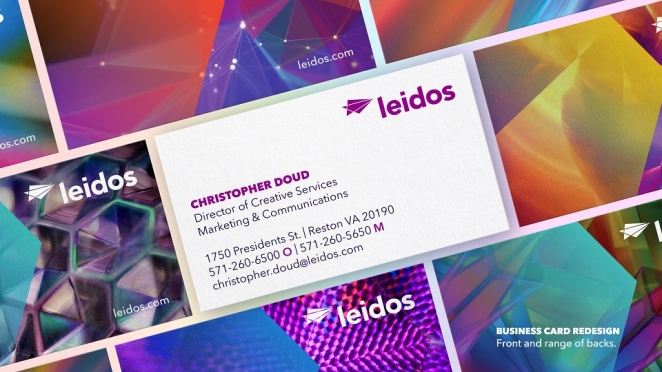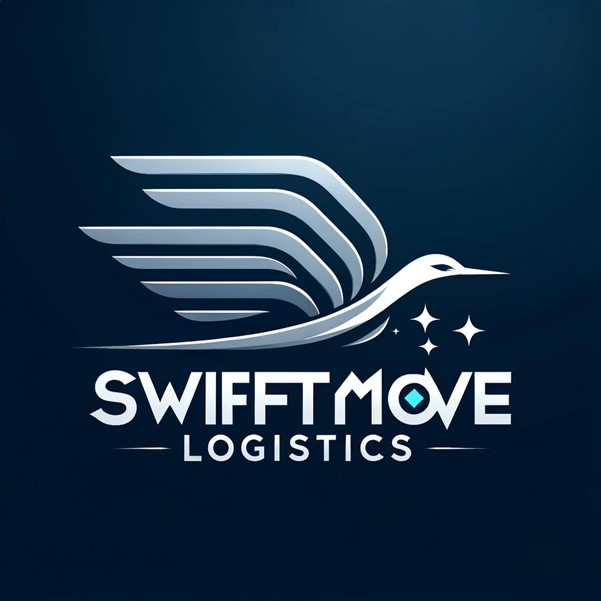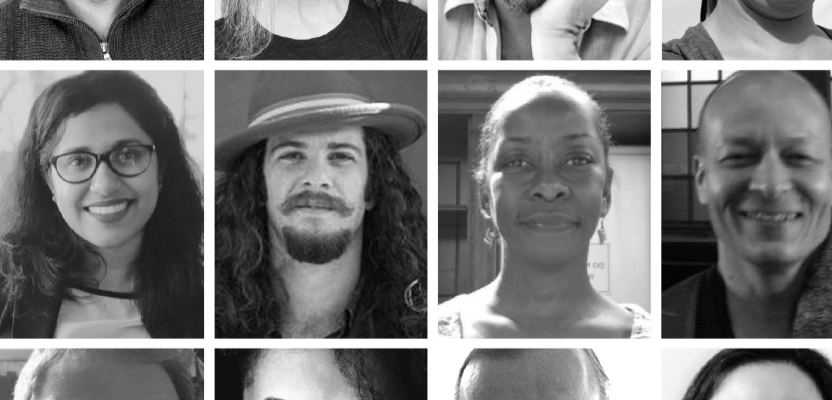How was your company born and where are you based?
IMP (Implementation Management Partners) was born in 2015, evolving from the established virtual agency Johnson Beesley, which started in 2007. Based in the US, IMP excels in brand identity design, design extension, and a full spectrum of creative services, focusing on comprehensive brand implementation including audits, launch planning, rollout, and management services. In 2021, to broaden our reach and enhance our capabilities in Europe, we opened a subsidiary in the UK.
This strategic move allows us to better tailor our offerings to diverse markets and more effectively serve our multinational clients. Ultimately, we’re a distributed workforce; as a virtual agency we enjoy a temporal 24-hour day with resources from Japan and Australia, westward across Europe, South America the continental US and Hawaii.
What was the biggest challenge to the growth of your company?
Unfortunately there is no “was” in this answer. At IMP, our biggest challenge has been and remains the classic 'feast or famine' nature of running a creative agency. On one hand, we need to continuously build the business to keep the lights on and ensure our team is engaged and ready for more. On the other hand, we must manage the high-volume and often sudden demands of our larger clients.

This balancing act requires a dynamic approach to resource management, where ensuring staff availability aligns with fluctuating project demands. Thankfully, our lead project manager excels at navigating these cycles, helping me focus on strategic growth while ensuring our operations run smoothly during peak and quiet times.
Which was the first huge success that you can remember?
The first significant success that stands out for me occurred before IMP, during the Johnson Beesley era. In 2010, we landed a global OEM manufacturer named Flextronics as a client (now “Flex”), a pivotal achievement as it was our first major client relationship in a then-novel virtual agency format. This partnership not only validated our business model but also led to our first 7-figure turnover, laying a strong foundation for future growth.
Building on this, IMP's initial major triumphs came from both Gannett (USA Today Network), and a global consultancy—whose name I can't share due to confidentiality agreements. Having previously collaborated with some team members at Landor, this client trusted us to deliver over 400 projects across five years, significantly bolstering our portfolio and credibility in the industry.
What’s the biggest opportunity for you and your company in the next year?
The biggest opportunity for IMP in the coming year lies in both expanding our existing projects and breaking into new sectors.
In the US, our ongoing work on the Leidos identity refresh opens doors to further integrate the brand system into more dynamic areas such as illustration, iconography, motion graphics, and environmental branding. This project also supports continued roles in brand governance, including managing a brand helpdesk, updating guidelines, and developing new templates and training materials.

In the UK, following our successful brand strategy and identity project for The Charity Hall of Fame, we see significant opportunities in pursuing similar cause-based initiatives and public sector bids. Additionally, we aim to attract small to mid-size businesses seeking the expertise of a big brand agency but with the competitive pricing of a smaller agency.
This dual focus allows us to leverage our expertise across diverse markets and sectors, enhancing our growth and presence in both the US and UK.
Can you explain your team’s creative process? What makes it unique?
Our team’s creative process is anchored by the principles of collaboration and empathy—skills we’ve honed to serve our clients effectively in our collective careers. We listen carefully, we question, and then we sketch (quite often pencil/pen to paper), prototype, design, iterate, produce, and deliver whatever it is we’ve been tasked to complete.
This same process applies whether it’s a pitch deck, a social post, creative/brand training right up the latter to brand identity development. What perhaps sets IMP apart is the pace and thoroughness with which we operate. We dive both deep and wide, but we do it with remarkable speed, maybe quicker than most.
We are also deeply committed to quality control (QC). Our rigorous 'check our work' ethic and our unofficial motto, 'the devil in the details,' are central to our approach. This blend of rapid, detailed execution ensures our creative solutions are both innovative and flawlessly realised. I believe it’s the only way to win the trust and partnership of a client.
How does your team remain inspired and motivated?
Our team stays inspired and motivated through a culture steeped in continuous learning (personal and professional) and the sharing of ideas. We leverage entertainment and fluid communication – primarily using Slack as our internal messaging platform – to share, ideate, and collaborate effectively.
This platform allows for both spontaneous creativity and immediate feedback, which are crucial for keeping our projects moving. Central to our team's dynamic is our shared sense of humour—admittedly a bit nerdy at times—which we believe acts as the best fuel for meeting our deadlines and building community.

While it may sound cliché, having fun is genuinely integral to how we work, helping us stay energised and engaged in both our creative and sometimes not-so-creative endeavours.
How has COVID-19 affected your company?
The Covid-19 pandemic gave our clients a firsthand look at the challenges of virtual work, a domain in which we've long specialised. As everyone adapted to remote environments, our clients experienced the difficulties of mastering communication channels, establishing private workspaces, and maintaining work-life boundaries.
This shift highlighted the complexities of creating a smooth, professional virtual environment—challenges we've navigated since our inception as IMP, and prior with Johnson Beesley. Through this period, our clients gained a newfound appreciation for the seamless experience we've consistently provided, deepening their understanding of the intricacies involved in effective virtual collaboration.
On the downside, the mid and post-pandemic economy led to shrinking budgets and tighter financial constraints, deeply affecting our partner relationships with other agencies. As agencies looked to conserve resources, they retracted from outsourcing resources more often, which impacted our business providing brand production, planning, and implementation services externally.
This shift forced us to adapt and demonstrate our value in a more competitive and budget-conscious market. This has been particularly true in the UK, where our initial strategy was to help agencies of all sizes deliver watertight production deliverables, a niche that, despite our success in the US, we struggled to establish traction within the UK market.
Which agencies do you gain inspiration from? Do you have any heroes in the industry?
Both my co-founder and I cut our teeth with Landor Associates, and the work of Walter Landor was a huge and lasting influence on us both. We’ve had the joy of working with (and for) Wolff Olins and Siegel Gale (amongst other agencies) and they both remain a significant influence. The former for pushing creative boundaries and defining new trends in branding, the latter for both strategic excellence and deft execution of identity (because “simple is smart”).

In the last 15 years I’d cite Douglas Sellers (S+G) and Forest Young (Interbrand, Rivian, et al) as two visionary creators I had the pleasure of briefly working with; and lastly our own Creative Director, Miles Seiden, never ceases to amaze and inspire me with his comprehensive and visionary creative mind. We literally call it “the Mind of Miles.”
What is one tip that you would give to other agencies looking to grow?
Persistently pursue your love of the craft and desire to advocate for others, with patience. Your clients will take notice, word will travel, and as it does you will be armed with the exact skillset needed to grow your staff to service a broader client base.
In other words, create a culture of empathy and advocacy for your clients, the rest will take care of itself. That has been our strategy, and while it’s not a “rapid growth hack” it is ultimately what has enabled our growth.
How do you go about finding new clients/business? (Pitching, work with retainers, etc.)
Our approach to finding new clients differs between the US and the UK. In the US, nearly all of our new business comes from referrals, leveraging the strong network we’ve built over 30 years.
In the UK, we have started from scratch, initially using targeted cold outreach. Recently, we've embraced public sector tendering, benefiting from legislative changes that favour smaller businesses. This has become a crucial part of our growth strategy as we work to build a referral network similar to the one in the US..
What’s your one big hope for the future of the industry?
In branding, my primary hope is that our field continues to evolve while remaining indispensable to our clients, especially as it becomes more democratised through technologies like Generative AI. I’m an outspoken advocate of GenAI and its role as an effective thought partner and procedural assistant.
If Canva’s “Magic Studio” can drum up a decent logo, and various LLM models can develop convincing brand tone of voice and messaging, clients may start to feel they don’t need to engage with the individuals that pride themselves in the art of research-led storytelling through verbal and visual communications. I’m a technocrat at heart, and embrace the reality that human progress (whether deemed creative or destructive) is fundamentally tied to technology.
Ultimately, I would like us all to do more creative and productive tasks in less time, so we can help more of our clients meet their objectives with optimal speed and impact. I thought to test my theory as I was writing this, so I’m attaching the result of a Dall-E prompt (below) to “create a brand logo for a new logistics company focused on speed and reach.

"You bea thu judjje." Jokes aside, once these shorter term problems are solved, I certainly see the value in prompted sketches to prompt further discovery, discussion and collaboration.
Do you have any websites, books or resources that you would recommend?
I try to read BrandNew faithfully every week. I really enjoy Armin’s tone of voice and story-telling, as well as the active community commentary on identity projects:
https://www.underconsideration.com/brandnew
Shameless plug (short link below), for any client-side brand teams preparing for or currently navigating a rebrand whether refresh, spin-off or M&A, I’ve written a free book that outlines the brand implementation process as we’ve practised it for decades. No strings attached, we don’t use marketing automation and I don’t have time to spam, just hoping it’s a helpful resource as we’d rather teach our clients to fish:

In addition, I’ve become a fan of newsletters as a way to let information come directly to me. It’s as close as I get to “reading time” these days. Aside from your own, I also enjoy reading The Hustle, The Neuron, and a fascinating one called Roden from Craig Mod, American guy who’s lived in Japan for years and utilises his readership to engage on special creative projects… mostly of the walking/wandering and photography ilk.




IMP (Implementation Management Partners) May 15th, at noon
Thank you very much for featuring our wee agency, we appreciate you!